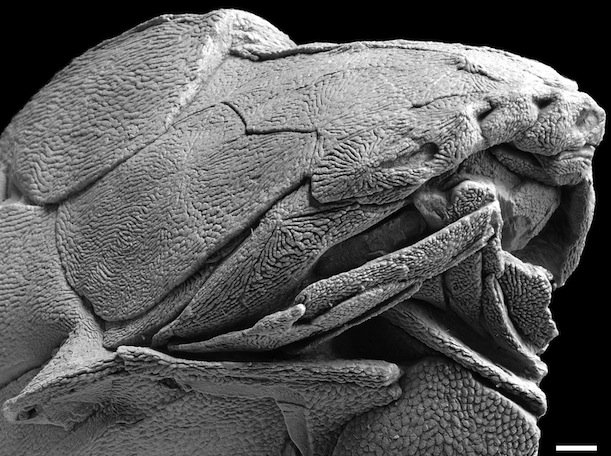MessageToEagle.com – This is the world’s oldest known face. It might not be what you expected, but what you’re seeing is unique! This ancient fossil is 419-million-year-old and it can help us gain better understanding of evolution on Earth.
Entelognathus primordialis was discovered in China and it is a new addition to the placoderms, a class of armor-plated fishes that lived from about 430 million to 360 million years ago.
Like most vertebrates, including mammals, placoderms had a bony skull and jaw, but most of them had simple beak-like jaws built out of bone plates. Palaeontologists have traditionally believed that the fishes’ features bore no relation to ours.
According to a study published in Nature, it was “assumed that the placoderm face was lost to evolutionary history, and most thought that the last common ancestor of living jawed vertebrates had no distinct jawbones — that it was similar to a shark, with a skeleton made mostly of cartilage and at most a covering of little bony plates.
The theory went that the bony fishes evolved later, independently developing large facial bones and inventing the ‘modern’ jaw. Such fishes went on to dominate the seas and ultimately gave rise to land vertebrates.”
However, this discovery forced researchers to re-evaluate their knowledge of facial evolution.
Scientists now say that there is “a serious possibility that the modern bony visage originated with E. primordialis’s ancestors. This would mean that humans look more like the last common ancestor of living jawed vertebrates than we thought, and that sharks are less primitive than palaeontologists assumed, having done away with their bones as an adaptation.”
See also:
Face Blindness Makes You Surrounded By Strangers: Why Some People Cannot Recognize Faces?
Our Ancestors Had A Tail And Lost It Twice
How Long Does Human Brain Develop?
It’s the oldest known creature with a face, and may have given rise to virtually all the faces that have followed in the hundreds of millions of years since, including our own.
Findings like this one can help researchers understand how evolution occurred in our planet’s ancient oceans and how the primitive creatures that swam in them eventually gave rise to the faces we see every day.
Interestingly, scientists have also proposed that our jaw evolved from Placodermi – a 423-million-year-old armored fish.
MessageToEagle.com
Expand for references
